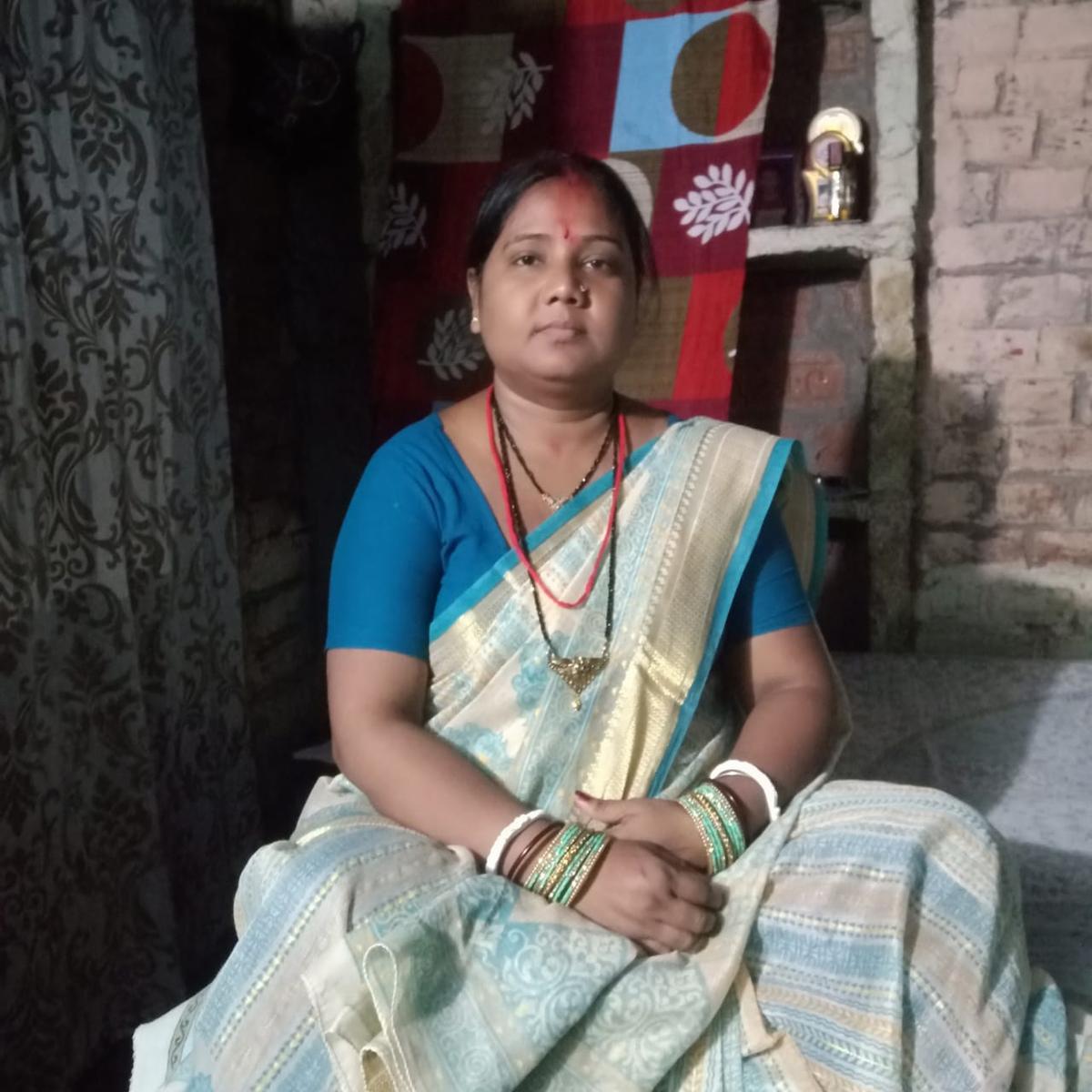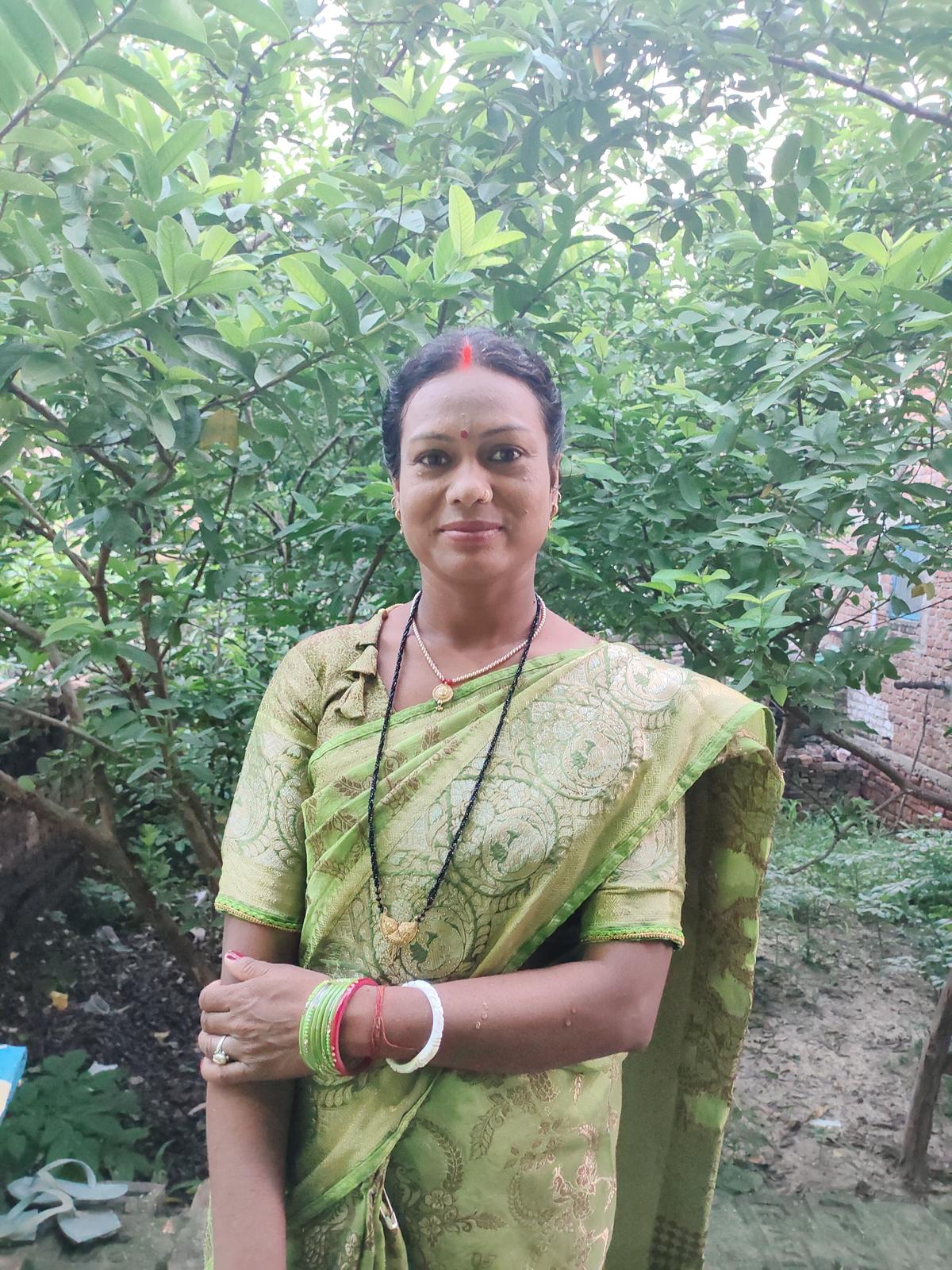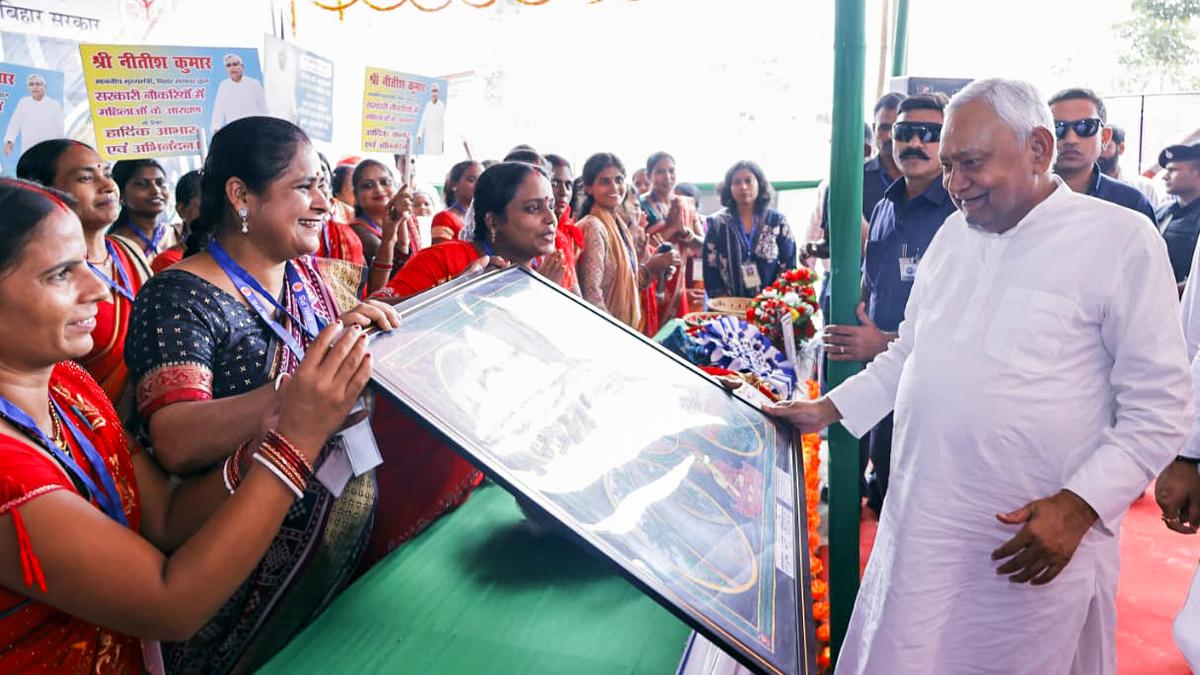Bihar Chief Minister Nitish Kumar interacts during the inauguration and lays the foundation stone for 22 development projects worth ₹1,333 crore at the Baliram Higher Secondary School campus at Sakra block, in Muzaffarpur on Monday, October 13, 2025.
| Photo Credit: ANI
After the results of the Bihar Assembly election of 2020 were declared, Prime Minister Narendra Modi singled out women voters for praise, crediting them for the victory achieved by the National Democratic Alliance. In 2025, the lessons of the previous election, and the 2024 Lok Sabha election are very much on the minds of poll strategists within the alliance.
According to backroom managers in the Janata Dal (United), the voting patterns of men and women reveal their own stories. “In the first two phases of the Lok Sabha election (Bihar saw polling in all seven phases), the percentage of polling for both sexes was nearly equal, and there were slightly mixed results. But in the third phase that took place on May 7, the NDA won all five seats,” said a source.

For example, in the Supaul Lok Sabha constituency, where women had a higher turnout (13.53%) than men, the JD(U) emerged the winner. Similarly, in Jhajharpur, where the voting difference was 13.22% in favour of women, the JD(U) once again emerged victorious; in Khagaria, women had an 11.21% edge, and the NDA’s Lok Janshakti Party (Ram Vilas) secured the win; in Madhepura, where the difference was 9.88% in favour of women, the JD(U) bagged the seat as well, while in Araria, with a 10.35% higher turnout among women, the BJP emerged the winner. “Clearly women are voting in larger numbers, and independently and in favour of the NDA,” said the source.

It is little wonder that the NDA government in the State has, in the run up to the election, announced the Mukhyamantri Mahila Rozgar Yojana (MMRY), which devolves ₹10,000 per female beneficiary for entrepreneurship, apart from the already existing Jeevika programme, and reservations for women in panchayats and government jobs.

The reception with regard to the MMRY, termed the “Dashazaaria” or the ₹10,000 programme, has been largely positive. Speaking to The Hindu, Renu Devi, a Jeevika worker from Pandpa village in Nardiganj, said that the ₹10,000 aid has got the support of even the men. “Bhaiyya log [our brothers] used to earlier say that Jeevika involves much effort for small amounts and intensive involvement with Self-Help Groups, but the ₹10,000 assistance means that every woman can now set up a small business in her home, buy two or three goats, or set up a small shop,” she said.

Renu Devi
Women’s self-assertion in public space is also an important by-product of these programmes, Ms. Renu Devi says proudly . “Eleven panchayat tak mujhe log jaante hain, Jeevika didi ke naam se [I am now known across 11 panchayats as Jeevika didi].”
Her colleague Munni Kumari from Gotrayan village, also in Nardiganj, says that after graduation, she had nothing to do and attended a Jeevika meeting, after which she applied for work there and was appointed at the nearby Didi Adhikar Kendra. At the centre, she deals with educational and medical issues of women, and even cases of domestic violence. “Nitishji [Chief Minister Nitish Kumar] has given young girls cycles [under the Mukhyamantri Balika Cycle Yojana, launched in 2006], the Jeevika scheme and now the Dashazaari. We are sure [Prime Minister Narendra] Modiji will do even more,” she said.

Munni Kumari
When asked, Sunita Devi of the same village dismissed suggestions of Mr. Kumar’s ill-health coming in the way of continuance of these schemes for women. “Modiji will continue these schemes,” she said.
Considered a particularly “casteless” vote category, women remain the silver bullet for the NDA in the upcoming election.
Published – October 13, 2025 09:31 pm IST
